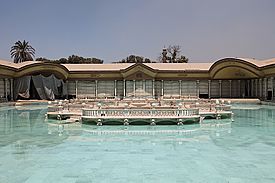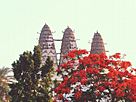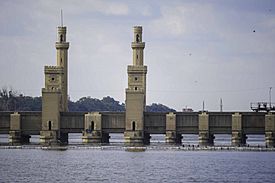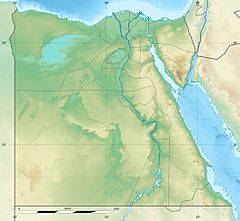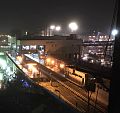Shubra El Kheima facts for kids
Quick facts for kids
Shubra El Kheima
شبرا الخيمة
|
|
|---|---|
|
Clockwise from top:
Shubrah Palace, Shubrah Palace Facade, Pigeon towers, Al-Qanatir |
|
| Country | Egypt |
| Governorate | Qalyubia |
| Area | |
| • Total | 30.0 km2 (11.6 sq mi) |
| Elevation | 26 m (85 ft) |
| Population
(2021)
|
|
| • Total | 1,240,289 |
| • Density | 41,340/km2 (107,080/sq mi) |
| Time zone | UTC+2 (EST) |
Shubra El Kheima (pronounced Sho-bra El Khey-ma) is a big city in Egypt. It's actually the fourth-largest city in the country, right after Cairo, Giza, and Alexandria. The name "Shubra El Kheima" means "hamlet of the tent."
This city is located in the Qalyubia Governorate, which is a region in Egypt. It sits right on the northern edge of the Cairo Governorate. Shubra El Kheima is also a key part of the huge Greater Cairo area, which is a large group of cities connected together.
Contents
History of Shubra El Kheima
Shubra El Kheima started as a small village next to the Nile River. A long time ago, in 1808, a famous leader named Mohamed Ali began building a special palace there. He wanted a quiet place away from the busy city. The palace was finished in 1821.
How the City Grew
During the 1900s, Shubra El Kheima changed a lot. It became a major center for factories and industries. Because of this, many workers and their families moved there to live and work.
Today, Shubra El Kheima is a very populated city. It connects with Cairo and Giza to form the large metropolitan area known as Greater Cairo. In 2017, over 1.1 million people lived in Shubra El Kheima.
Getting Around Shubra El Kheima
Shubra El Kheima has good ways to get around.
Metro and Trains
The city has its own station for the Cairo Metro, which is like an underground train system. This station is the very last stop on Line 2 of the Cairo Metro. There's also a regular train station nearby that is part of the Egyptian National Railways.
Other Ways to Travel
Besides the metro and trains, people in Shubra El Kheima use other types of transport. These include taxis, public buses, and smaller shared vans called microbuses. In some of the less wealthy areas, you might even see tuk-tuks, which are small, motorized rickshaws.
Famous Places to See
Shubra El Kheima is home to some interesting historical sites.
Mohamed Ali Pasha's Palace
One of the most important landmarks is the Fountain Pavilion of Mohamed Ali Pasha. This beautiful building was built in 1821. It was once part of a much larger palace complex that no longer exists today.
Mohamed Ali chose this spot for his palace because it was peaceful and away from the main city. The palace is special because its decorations mix both traditional Islamic styles with European designs.
Images for kids
-
Protesters during 2011 Arab Spring
See also
 In Spanish: Shubrā al-Khaymah para niños
In Spanish: Shubrā al-Khaymah para niños


